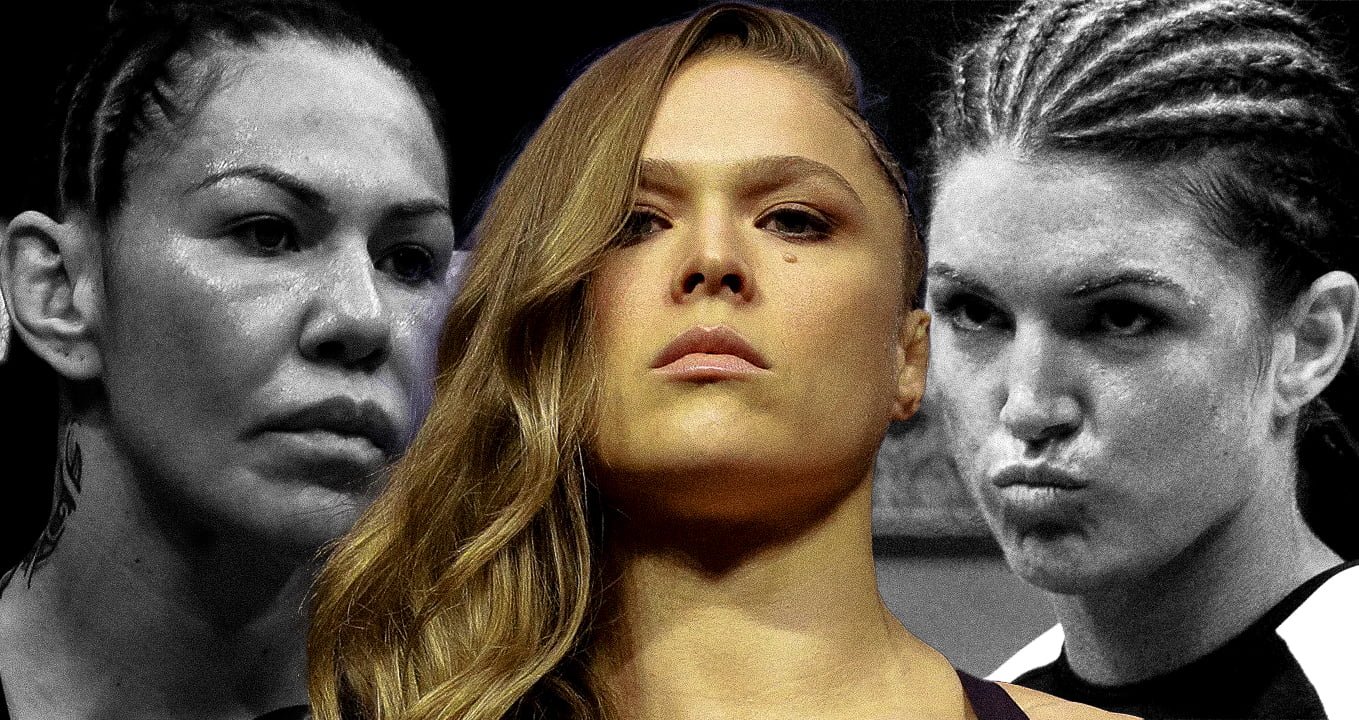
The Evolution of Women’s Mixed Martial Arts
Women’s Mixed Martial Arts has come a long way since the origin of the sport. From not being able to fight, to producing stars, WMMA continues to evolve and grow. In the competitive world of combat sports, there is a remarkable transformation occuring. As the sport continues to evolve, so do its fighters. Women stand at the forefront of this transformation, reshaping the narrative around gender in the cage.
The origins of WMMA can be traced back to the early 2000s, a promotion in Japan known as Smackgirl became one of the first organizations to hold all-female MMA events. This allowed a platform for women to showcase their skills to a larger audience overseas.
EliteXC & Gina Carano (2007)
One of the rising moments for WMMA was the emergence of Gina Carano. Carano gained significant attention and recognition for her performances in EliteXC, a prominent MMA promotion at the time. Her wars in the cage brought a new level of exposure to Women’s MMA and demonstrated that female fighters could be both skilled athletes and marketable stars.
Strikeforce & The Rise of Cris Cyborg (2009)
In 2009, Strikeforce introduced a women’s division, solidifying the presence of WMMA in a mainstream organization. Cris “Cyborg” Santos, known for her incredible knockout power, became a dominant force and competed in Strikeforce’s 145-pound division.
Ronda Rousey & The UFC (2013)
The single most significant catalyst for WMMA’s rise to prominence was the inclusion of female fighters in the Ultimate Fighting Championship (UFC) in 2013. Ronda Rousey, a former Olympic judoka, emerged as the sport’s biggest star and its first female champion. She racked over millions in PPV’s and finished fights in such an incredible and dominant fashion. Her charisma, fighting style, and marketability brought unprecedented attention to WMMA, proving that women could be major draws in MMA. Ronda had been pushing a 12-fight win streak, finishing all but one fight in the first round.
The Ultimate Fighter (2013)
WMMA received a substantial boost in recognition and popularity when the reality television show The Ultimate Fighter introduced a women’s division in 2013. It showcased talented female fighters, including Ronda Rousey and Miesha Tate as the coaches. The rivalry between the two garnered attention and gave female contenders a platform to show off their skills.
Julianna Peña would go on to win the show. She eventually joined the legendary list of TUF champions to become world champions in the UFC.
WMMA Today
Today, WMMA is among all promotions whether it be the UFC, Bellator, PFL, or the regional scene. We also have an all-female promotion for prospects in Invicta FC. Invicta will forever be known for producing countless stars and world champions, such as Kayla Harrison, Amanda Nunes, Valentina Shevchenko, Alexa Grasso, and many more.
Not only will WMMA continue to grow, the talent is already evolving and has been noticeable in recent years. It will be amazing to look back on 10 years from now to see the new heights and superstars that are created under the brightest of lights.
Who is your favorite female fighter of all-time? Let us know in the comments below.



I love me some Ronda!